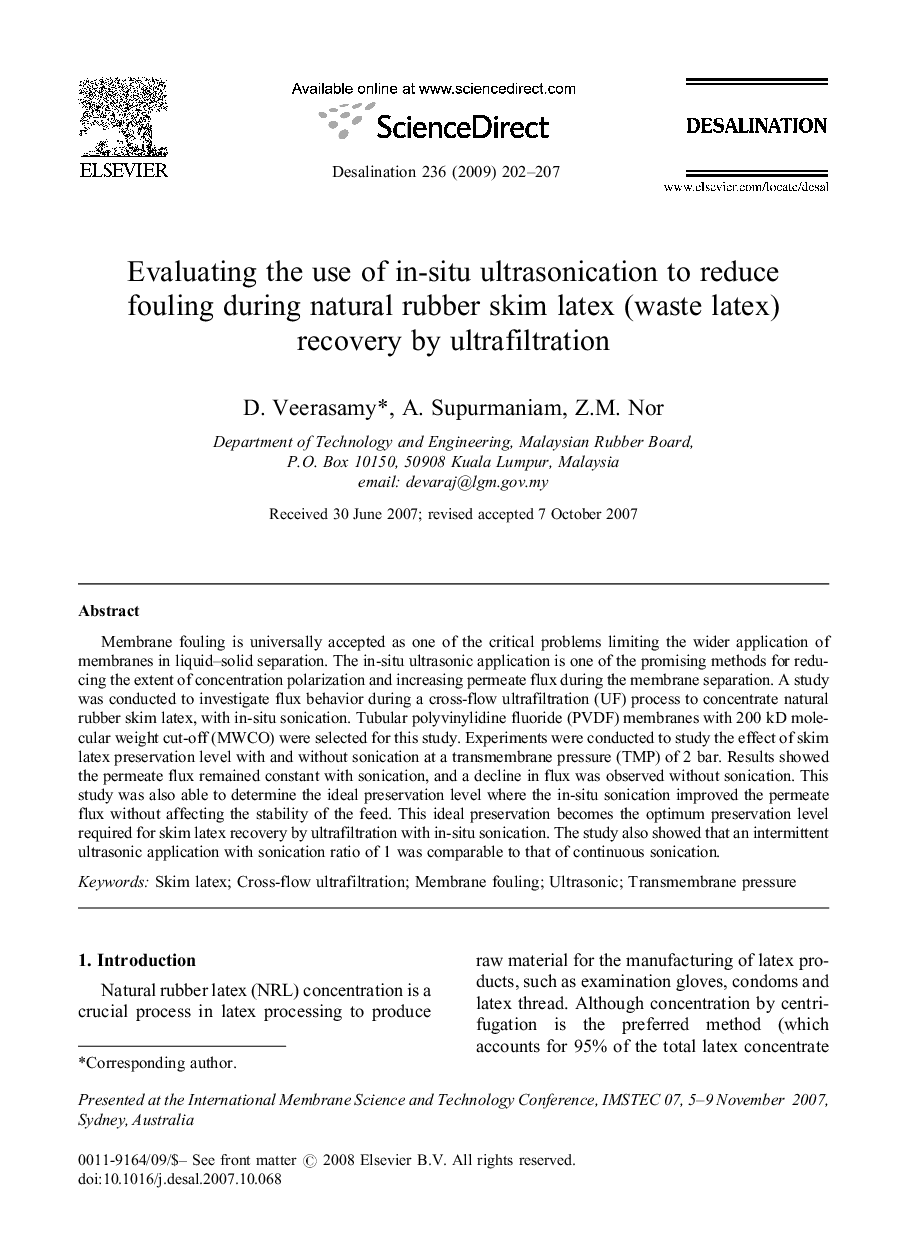| Article ID | Journal | Published Year | Pages | File Type |
|---|---|---|---|---|
| 627039 | Desalination | 2009 | 6 Pages |
Membrane fouling is universally accepted as one of the critical problems limiting the wider application of membranes in liquid–solid separation. The in-situ ultrasonic application is one of the promising methods for reducing the extent of concentration polarization and increasing permeate flux during the membrane separation. A study was conducted to investigate flux behavior during a cross-flow ultrafiltration (UF) process to concentrate natural rubber skim latex, with in-situ sonication. Tubular polyvinylidine fluoride (PVDF) membranes with 200 kD molecular weight cut-off (MWCO) were selected for this study. Experiments were conducted to study the effect of skim latex preservation level with and without sonication at a transmembrane pressure (TMP) of 2 bar. Results showed the permeate flux remained constant with sonication, and a decline in flux was observed without sonication. This study was also able to determine the ideal preservation level where the in-situ sonication improved the permeate flux without affecting the stability of the feed. This ideal preservation becomes the optimum preservation level required for skim latex recovery by ultrafiltration with in-situ sonication. The study also showed that an intermittent ultrasonic application with sonication ratio of 1 was comparable to that of continuous sonication.
